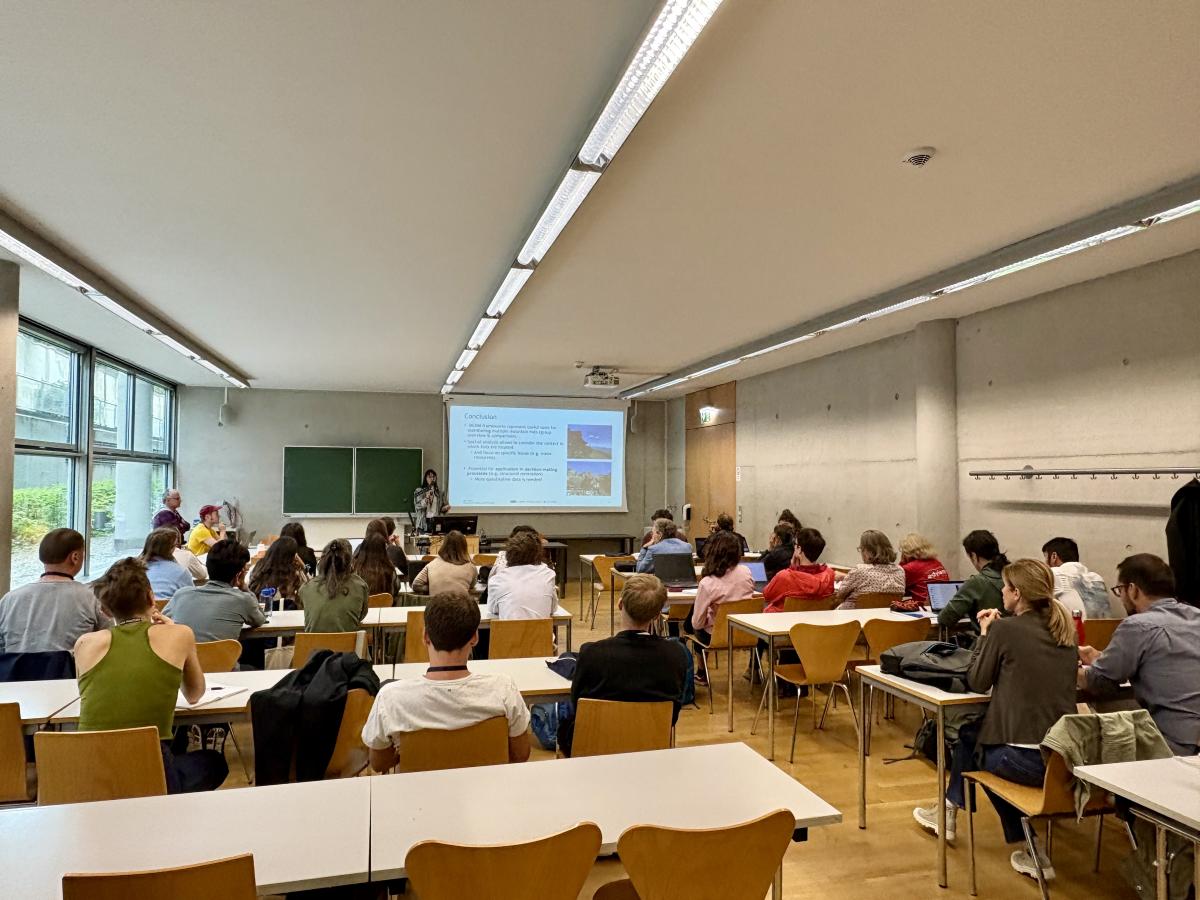Alpine Huts and Mountain Tourism: Workshop Synthesis
Submitted by rbeltram on Wed, 17/09/2025 - 22:20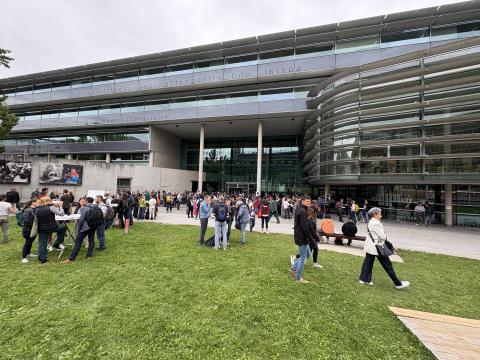
Convener: Beltramo Riccardo
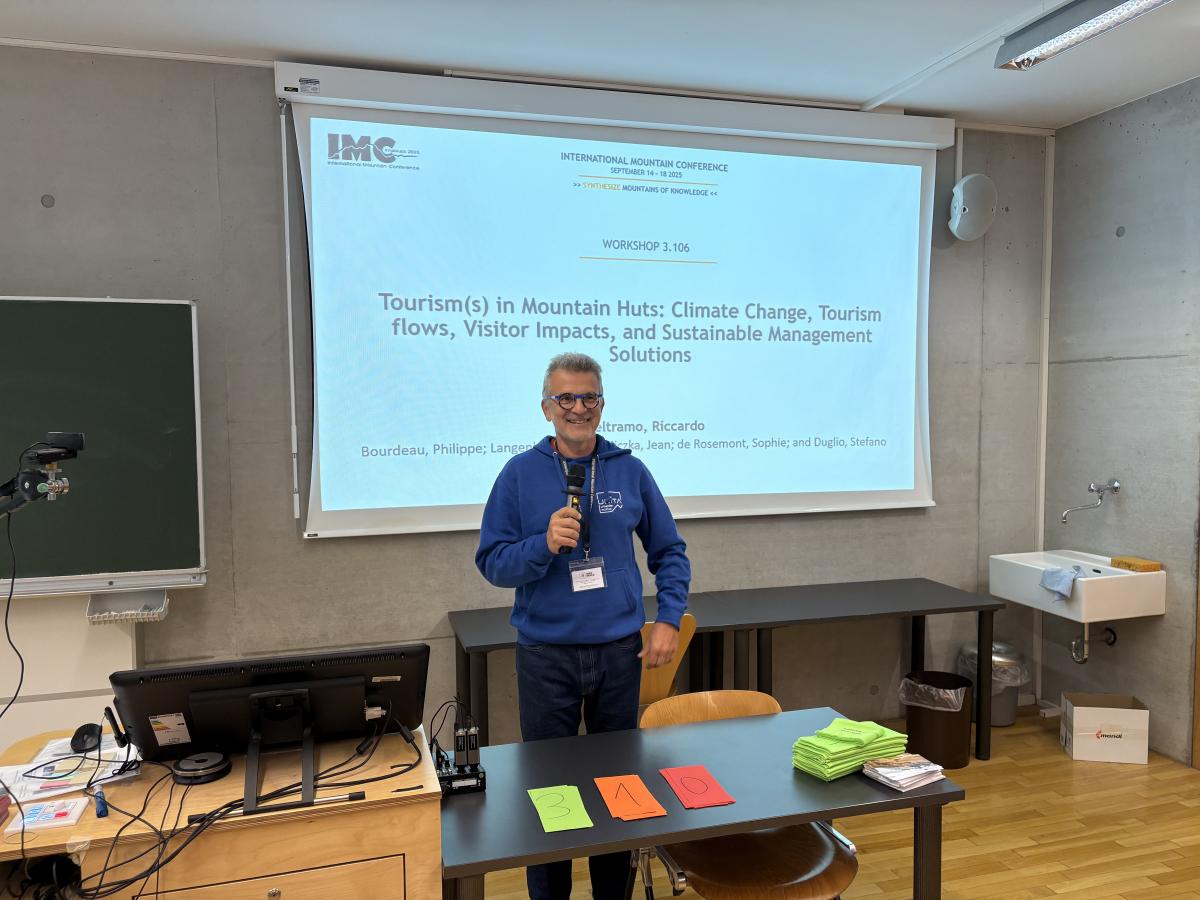
Co-convener: Langenbach, Marc; Miczka, Jean; de Rosemont, Sophie; Duglio, Stefano and Bourdeau, Philippe.
The workshop on Alpine Huts and Mountain Tourism explored the evolving role of huts as infrastructures located at the intersection of environmental, social, and economic dynamics. Once conceived primarily as simple shelters, huts are now facing the combined pressures of climate change, overtourism, and shifting visitor expectations. Contributions emphasized both the opportunities and the risks arising from this transformation, underlining the need for integrated approaches that connect research, management practice, and governance.
Tourism and Mountain Huts: A Review of Scientific Literature (Duglio S., Beltramo R.)

This contribution provides a state-of-the-art overview of scientific research on mountain huts and tourism. A bibliometric analysis was conducted using the Scopus database with a set of keywords related to huts/refuges and tourism.
- Findings: 54 publications were identified (1980–2022), with a peak in 2022 (6 papers). Most contributions are scientific articles (40), with Italy (13) and Austria (6) being the most represented and cited countries.
- Key themes: climate change impacts on huts, environmental implications (particularly water supply and wastewater management), and the link between huts and sustainable tourism, often in connection with protected areas.
- Limitations: reliance on Scopus-indexed works only, with analysis limited to abstracts and keywords.
From Shelter to Emotional Place: The Evolution of Hospitality in Alpine Huts (Gianola A.)
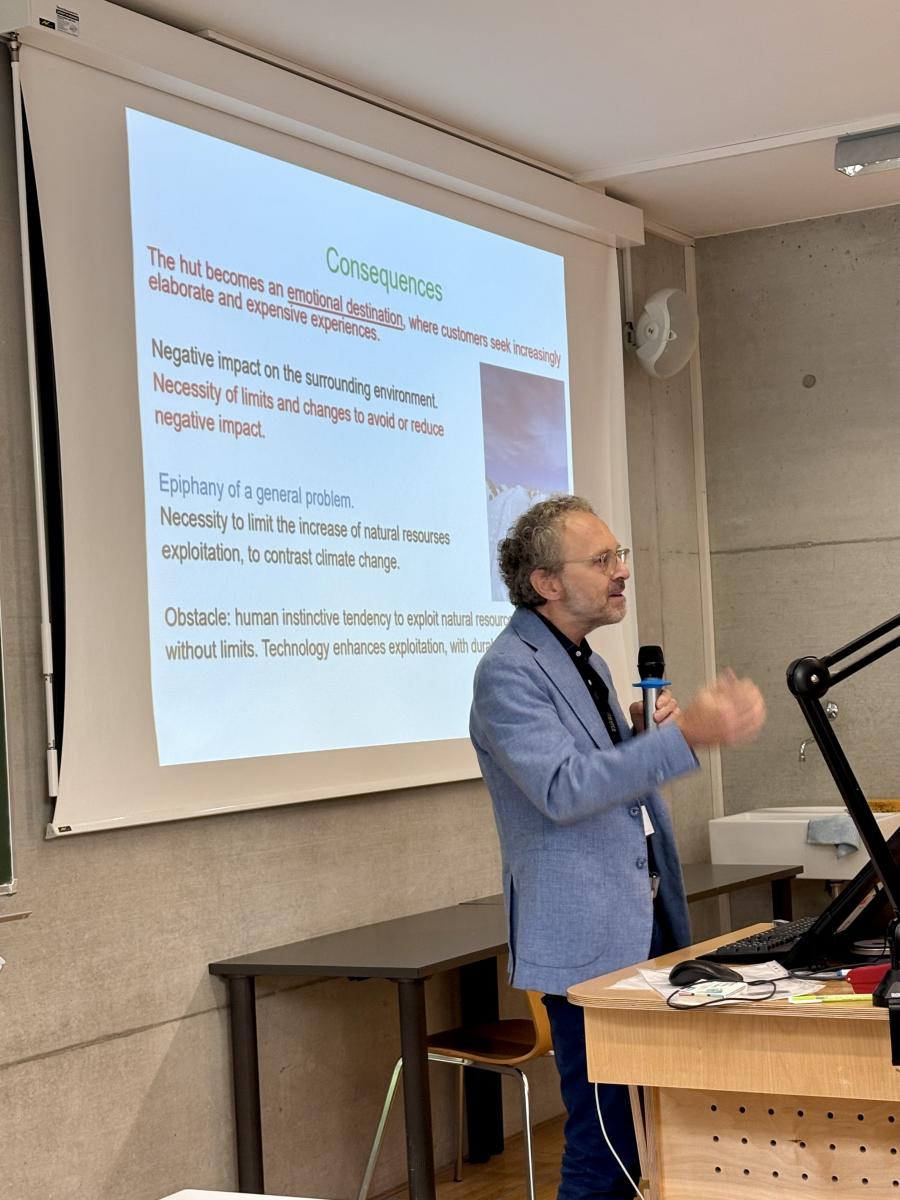
Alpine huts, once offering basic shelter and modest services to mountaineers, have progressively evolved into enterprises shaped by growing visitor numbers and changing expectations.
- Shift in use: While traditionally serving athletes as intermediate stops, huts are increasingly final destinations for casual hikers seeking comfort.
- Entrepreneurial management: Driven by profit motives, managers enhance quality standards toward hotel-like services, expanding client bases beyond traditional mountaineers.
- Transformation: Huts are becoming “emotional places” and cultural venues, providing immersive, technology-enabled experiences.
- Risks: This evolution raises environmental concerns, as expansion, increased accessibility, and motorized transport may trigger a creeping “urbanization” of the alpine environment.
Hut Managers as Observers of Overtourism in Alpine Areas (Mina G., Beltramo R., Peira G., Duglio S.)
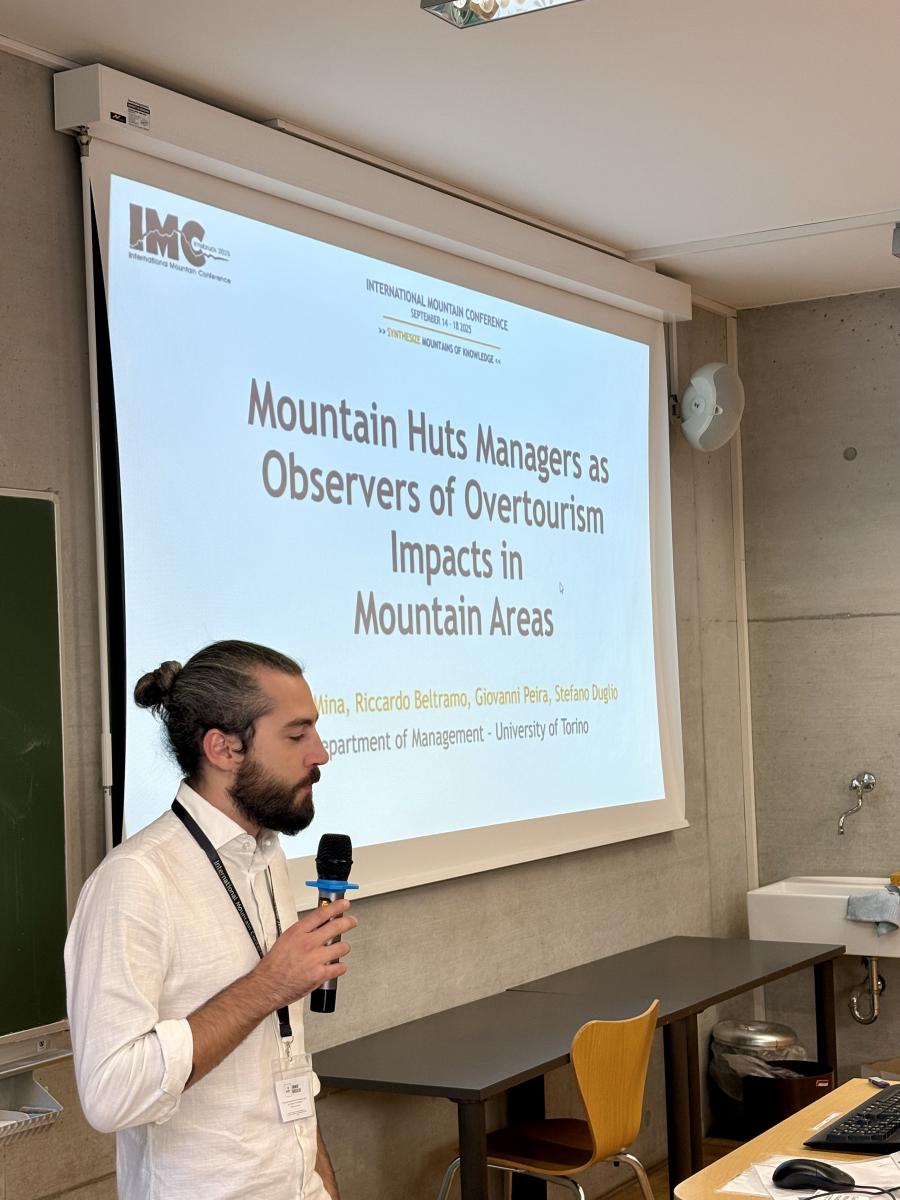
This study explores the perspectives of mountain hut managers on overtourism and its sustainability under climate change constraints.
- Methodology: A nationwide survey of 250 managed huts in Italy (≈30% of active huts) gathered insights on demand trends, climate change impacts, resource needs, and experiences of overtourism.
- Findings: Many managers report overtourism as an existing issue, with visible impacts already. Accessibility and service level strongly influence perceptions of pressure. Respondents believe mountain tourism can remain sustainable if effectively managed and supported by visitor awareness.
- Contribution: The study highlights hut managers as under-researched but crucial witnesses to overtourism, offering practical knowledge on where and why pressures are most acute, and pointing toward management strategies to mitigate them.
Sustainability Assessment of Mountain Huts: A GIS-based Multi-Criteria Decision Analysis (Tegoni S.)

This thesis applies Multi-Criteria Decision Making (MCDM) methods to evaluate the environmental sustainability of huts in Trentino, Italy.
- Approach: Point-based and spatial MCDM were used to rank huts by operational sustainability and map natural water resource availability (WAMap).
- Findings: Clear consensus emerged on the most and least sustainable huts, while intermediate ones show the highest potential for improvement. Huts in dolomitic limestone zones face severe water scarcity, worsened by climate change.
- Implications: Alpine organizations should enhance data collection on attendance, water, and energy use to support targeted interventions. Sustainable innovation requires integrating data, territory, and community for resilient hut management.
The Evolution of Mountain Tourism: Impacts on Hut Management, Visitor Behaviour, and Food Waste (Cambruzzi G., Martini U., Buffa F., Morellato M.)
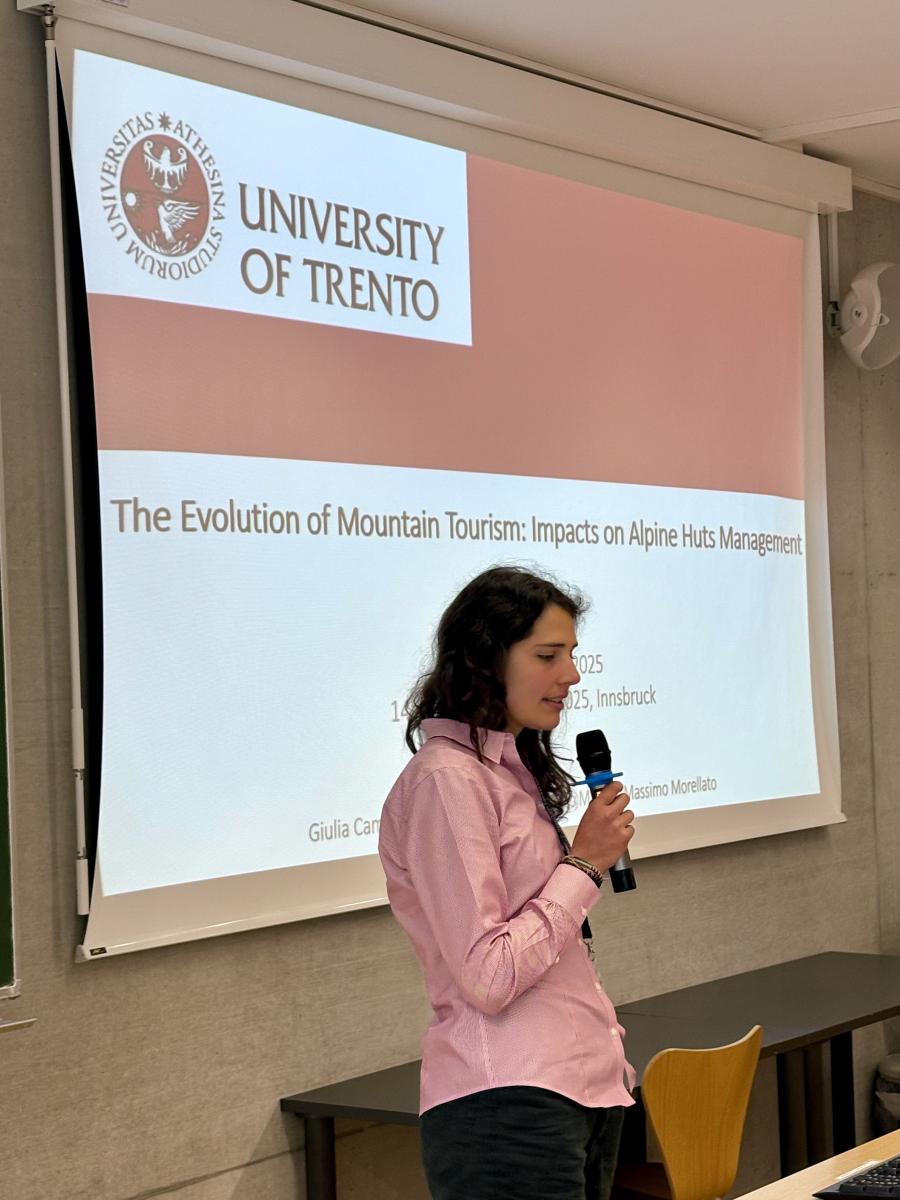
Mountain tourism has shifted significantly, with rising visitor numbers and easier accessibility transforming huts into destinations for diverse groups (families, bikers, casual hikers).
- Visitor behaviour: Longer stays are giving way to day trips or short visits, increasing pressure on hut services.
- Study focus: In the Euregio region, huts were analyzed based on CAI categories and factors such as daily meals served, menu variety, service type, ownership, manager role, seasonality, and provisioning logistics.
- Key concern: Food waste emerges as a critical sustainability issue, tied to supply chain logistics and visitor consumption patterns.
- Aim: To design a strategic management tool enabling hut operators to reduce environmental impacts through better food waste management.
Mountain Huts as Climate Sentinels: Perceptions of Water Scarcity (Stemberger S., Leonardi C., Mencarini E., Massa P.)
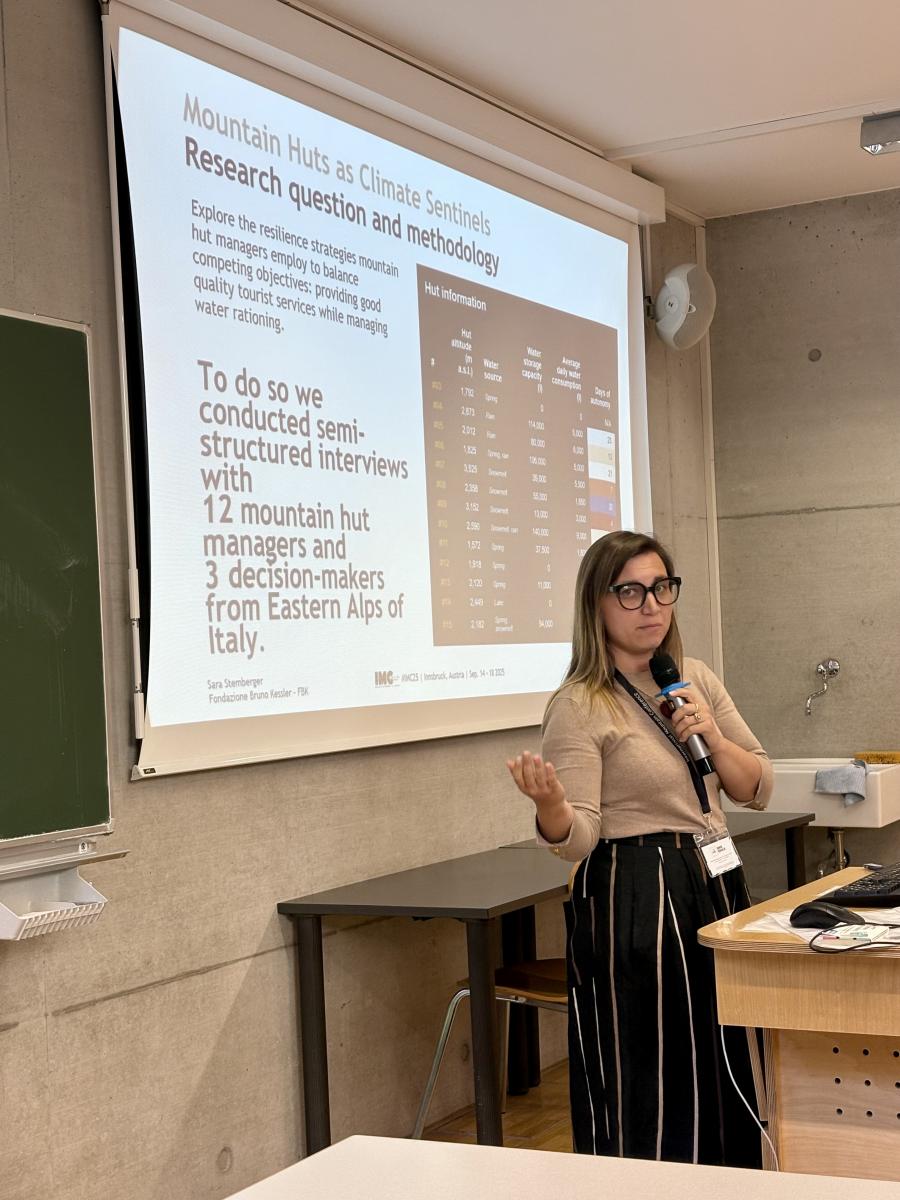
High-altitude huts act as sentinels of climate change, facing acute water scarcity in fragile alpine ecosystems.
- Method: Semi-structured interviews with 12 hut managers and 3 decision-makers in the Eastern Italian Alps (Trentino) examined resilience strategies.
- Findings: Managers balance competing goals: providing quality tourist services vs. rationing water. Adaptation strategies vary by location, altitude, and resources, reflecting diverse challenges.
- Insights: While managers implement conservation practices, they highlight inadequate long-term planning and reliance on crisis-driven responses. The study reveals the need for integrated strategies reconciling resource conservation, service provision, and ecological resilience under accelerating climate change.
Mountain Huts as Anchors of Lightly Developed Mountain Areas (De Rosemont S., Miczka J.)
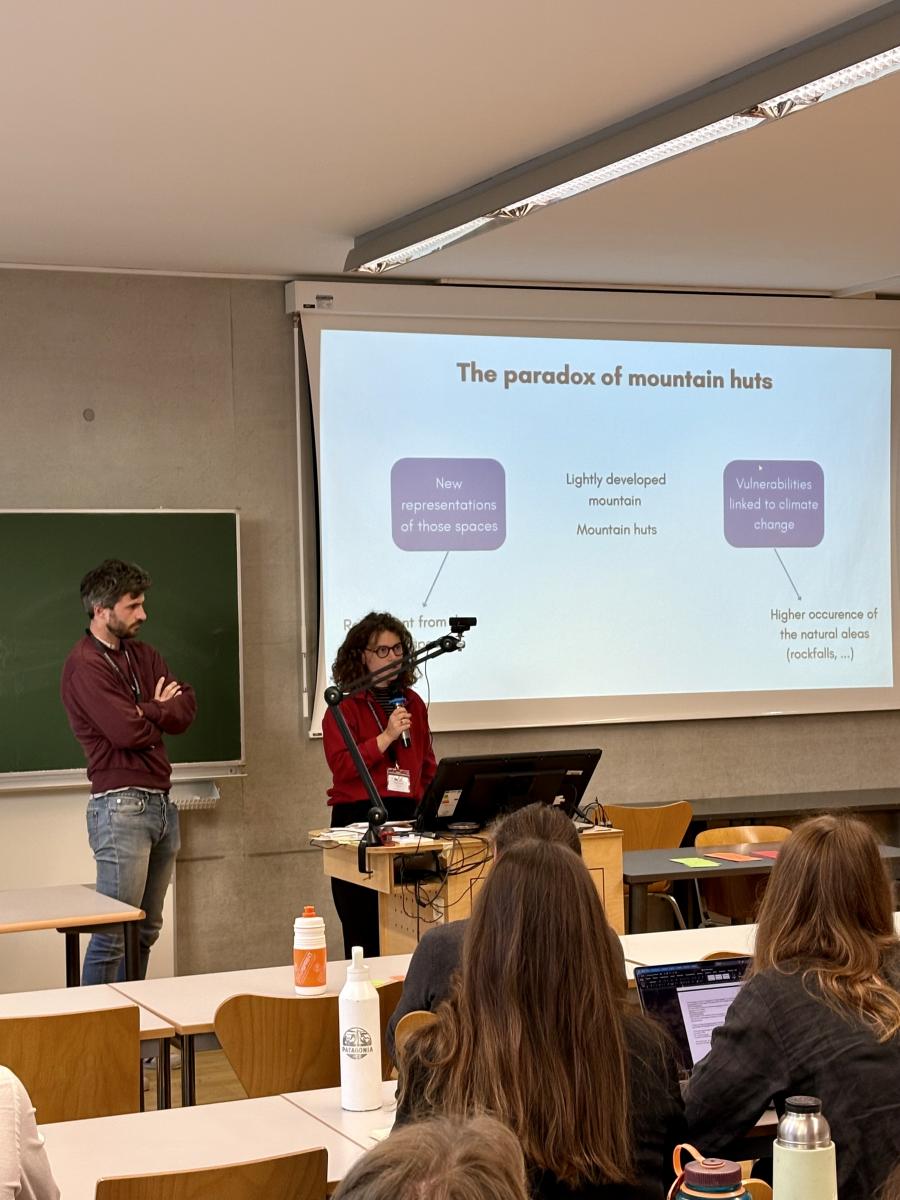
Lightly developed mountain areas exist between ski resort zones and strictly protected areas, marked by limited infrastructure (trails, pastures, huts) yet increasingly shaped by outdoor sports.
- Role of huts: They serve not only tourists but also guides, rescuers, and pastoralists, sustaining seasonal or permanent human presence and challenging the notion of wilderness.
- Case studies: Research in the Écrins, Mont-Blanc, and Valais Alps (France/Switzerland) since 2017 combines participatory methods with hut wardens, guides, and policymakers.
- Findings: Huts emerge as critical infrastructure and governance actors, mediating recreational use, professional needs, and long-term habitation.
- Contribution: By integrating historical, empirical, and governance perspectives, the study refines the concept of “lightly developed mountains,” positioning huts as anchors of these landscapes.
